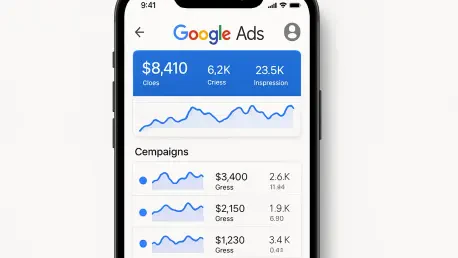The digital advertising ecosystem is abuzz with anticipation and a touch of apprehension as Apple’s latest operating system, iOS 26, currently in its beta testing phase, approaches its scheduled launch in September. This new iteration has drawn intense scrutiny from marketers, Google Ads specialists, and attribution experts due to its potential to reshape the landscape of online campaign tracking, particularly through its impact on critical Google Ads parameters like the click identifier, gclid. Apple’s long-standing emphasis on user privacy, manifested through features such as Intelligent Tracking Prevention (ITP) and App Tracking Transparency (ATT), has historically challenged traditional tracking methods, and the beta results of iOS 26 suggest a continuation of this trend with a nuanced twist. While early findings indicate that sweeping disruptions to tracking parameters may not be the default, specific conditions and environments reveal limitations that could affect campaign measurement and optimization. These mixed outcomes have sparked discussions across the industry about how digital advertising strategies might need to evolve. This article delves into the key revelations from the beta testing, examines the interplay between privacy policies and tracking capabilities, and explores the broader implications for advertisers navigating an increasingly privacy-focused digital world.
Privacy Policies Shaping Tracking Dynamics
The core of the conversation around iOS 26 centers on Apple’s ongoing commitment to user privacy and how it intersects with the operational demands of digital advertising. Beta testing has shown that the gclid parameter, essential for tracking clicks in Google Ads, remains intact during regular browsing in Safari unless users manually enable advanced privacy options like “Tracking & Fingerprint Protection.” However, challenges emerge in more restricted environments. For instance, in private browsing mode, existing limitations on gclid persist, and the parameter is consistently stripped when links are accessed through Apple’s Mail and Messages apps. This creates a significant obstacle for marketers who depend on email or messaging campaigns to drive traffic and conversions, as these channels are integral to many strategies. The selective nature of these restrictions highlights Apple’s attempt to balance user control with functional advertising needs, but it also underscores the necessity for advertisers to understand and anticipate where disruptions might occur.
Adding to the complexity are the discrepancies observed between different testing environments of Safari. While the standard beta builds provide a relatively stable outlook with gclid preservation in typical scenarios, the Safari Technology Preview versions occasionally block gclid across all browsing modes, only to reinstate it in private browsing under certain conditions. Industry experts have advised against drawing firm conclusions from these preview builds, as they often incorporate experimental features that may not make it to the final release. Instead, the focus should remain on beta results for a clearer picture, though marketers are encouraged to stay vigilant. This inconsistency serves as a reminder of the fluid nature of Apple’s development process and the importance of preparing for potential changes as the launch date nears.
Emerging Alternatives and Technological Responses
As privacy restrictions tighten, alternative tracking parameters have come to the forefront as critical tools for maintaining campaign attribution. Parameters like gbraid, designed for app-to-app measurement, and wbraid, tailored for app-to-web conversions, have proven resilient even in environments where gclid faces limitations. Although these alternatives lack the depth of gclid in supporting advanced functionalities such as remarketing or audience segmentation, they ensure that basic tracking remains viable under restricted conditions like private browsing or enhanced privacy settings. Their functionality offers a lifeline to advertisers, providing continuity in measurement when traditional methods are curtailed by Apple’s policies. This shift toward alternative identifiers reflects a broader adaptation within the industry to navigate the evolving constraints imposed by browser vendors prioritizing user data protection.
Google has also responded with innovative solutions to mitigate the impact of tracking limitations. Technologies such as Enhanced Conversions utilize first-party data, including identifiers like email addresses, to model conversion outcomes when direct tracking parameters are unavailable. Similarly, Consent Mode 2 provides a framework to estimate user behavior for individuals who opt out of tracking, aligning with privacy preferences while still offering valuable insights. These tools, underpinned by machine learning, lessen the dependency on specific identifiers and enable advertisers to sustain measurement accuracy despite disruptions. Such advancements signify a proactive approach from Google, equipping marketers with methods to adapt to an environment where traditional tracking faces increasing scrutiny and restriction.
Industry Shifts Toward Privacy-First Measurement
The digital advertising sector is witnessing a profound transformation, driven by a push toward privacy-preserving measurement techniques, a trend significantly influenced by Apple’s policies since earlier iOS updates. Safari’s ongoing efforts to curb cross-site tracking, coupled with features like Advanced Fingerprinting Protection, primarily target sophisticated tracking scripts while generally sparing basic attribution parameters by default. Nevertheless, the consensus among industry observers is that Apple’s final implementation of iOS 26 could still introduce tighter controls, necessitating a state of readiness among marketers. This progressive tightening of privacy measures reflects a growing consumer demand for data protection, compelling the industry to rethink how campaigns are measured and optimized in a landscape where user consent takes precedence over unchecked data collection.
In response to these challenges, there is a noticeable pivot toward leveraging first-party data and server-side solutions. Server-side tagging, for instance, moves tracking logic away from the vulnerable browser environment to more controlled server settings, thereby bypassing many of Safari’s filtering mechanisms. Additionally, some marketers have explored custom parameter implementations, renaming gclid values to evade detection, though there remains a risk that Apple could enhance its systems to counter such tactics. Google’s offerings, including Tag Manager templates and Smart Bidding algorithms, further facilitate optimization by working with partial or modeled data. These strategies underscore an industry-wide move toward automation and data-driven solutions that can function effectively even as traditional tracking methods face constraints, highlighting the need for adaptability in an ever-changing digital space.
Strategic Planning for Digital Marketers
The insights gleaned from iOS 26 beta testing serve as a crucial signal for digital marketers to refine their approaches. The preservation of gclid in standard browsing scenarios offers a degree of reassurance, indicating that immediate, sweeping changes to existing campaigns may not be necessary. However, the specific vulnerabilities identified in Apple’s communication apps, such as Mail and Messages, alongside the uncertainty surrounding the final release, call for proactive contingency planning. A practical starting point involves auditing current tracking setups to identify dependencies on particular parameters that might be at risk. Such an assessment allows marketing teams to pinpoint potential weaknesses and address them before they impact campaign performance, ensuring smoother transitions as new privacy measures roll out.
Beyond immediate audits, a longer-term focus on enhancing first-party data collection and investing in attribution modeling is vital. These approaches align with the industry’s shift toward privacy-first methodologies, enabling campaigns to remain effective even when direct tracking is limited. Google Ads’ adaptive technologies, such as Smart Bidding, exemplify how automation can counteract data scarcity by optimizing bids based on available insights. Marketers are encouraged to integrate these tools into their workflows, building resilience against tracking disruptions. Apple’s pattern of incremental privacy adjustments, rather than abrupt overhauls, provides a window for strategic refinement, allowing time to adopt new technologies and prepare for a future where flexibility and foresight are indispensable in maintaining a competitive edge in digital advertising.
Navigating Future Uncertainties
Reflecting on the beta testing outcomes for iOS 26, it becomes evident that while Google Ads tracking parameters like gclid encounter fewer restrictions than initially feared in standard scenarios, specific contexts demand careful attention. The consistent stripping of gclid in Apple’s Mail and Messages apps, alongside lingering doubts about the final release’s configuration, highlights areas where marketers need to tread cautiously. Alternative parameters such as gbraid and wbraid, combined with Google’s modeling technologies, provide essential support in maintaining attribution accuracy during these tests.
Looking ahead, digital marketing professionals should prioritize actionable steps to bolster their strategies. Developing robust first-party data frameworks and exploring server-side tracking solutions stand out as key measures to counteract potential limitations. Continuous monitoring of Apple’s updates as the launch approaches will be critical to staying ahead of any last-minute changes. Additionally, embracing Google’s evolving tools and automation capabilities can help mitigate the impact of reduced tracking data. These steps, grounded in the lessons from beta testing, pave the way for sustained campaign effectiveness in a privacy-centric digital environment, ensuring that adaptability remains at the core of future planning.









